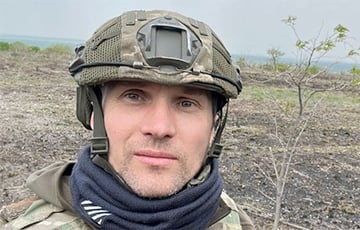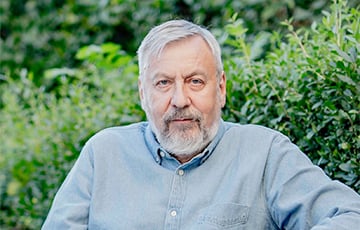Battle For Kherson: Why Russia Concentrates Airborne Forces, Destroying Communications
17- YURI BUTUSOV
- 5.11.2022, 9:03
- 31,030

What is happening now in the key city in southern Ukraine.
The Russian army is strengthening the defense of the Kherson bridgehead, and has concentrated almost all of the Russian airborne troops here. At the same time, the Russians are evacuating all occupational institutions, destroying communications, preparing to flee from Kherson and retreat across the Dnieper. What is happening in Kherson, and what are the prospects for its liberation?
1. Russian forces and the significance of Kherson
The Kherson bridgehead is defended by the most combat-ready forces of the Russian army. The grouping is led by the commander of the airborne troops of the Russian Federation, Colonel General Mikhail Teplinsky, the 22nd Army Corps (Major General Marzoev) is subordinate to him in full force. As part of the Russian group, battalion tactical groups from the 7th and 76th airborne assault divisions, the 98th airborne division, the 11th, 31st, 83rd airborne assault brigades, the 45th brigade of the Special Forces of the Airborne Forces, the 90th Tank Division, the 19th Motorized Rifle Division, the 126th Coastal Defense Brigade, the 810th Marine Brigade, the 37th Motorized Rifle Brigade, the 10th Special Forces Brigade, operational units of the Russian Guard. Almost all Russian Airborne Forces are concentrated here: three out of four divisions and all four brigades. Reinforcements of personnel and military equipment are constantly transferred here. The Russian troops retain control, organization, and you should not think that they will run away on their own from a slight push. This increased force will only be beaten out by a more effective force, a more successful tactic.
2. Strategy
A series of Russian defeats in Ukraine has now changed the plans of the RF Armed Forces. Instead of capturing all of Ukraine, the Russians are now forced to focus on holding and capturing the Donbas, on the defense of the land corridor to the Crimea through the Zaporizhzhia region. The command of the Armed Forces of Ukraine continues the offensive, and the advantageous foothold in Kherson has turned into an anvil. Systemic strikes on bridges across the Dnieper narrowed the possibilities for the supply of ammunition and support, and limited the maneuver of troops, which increased the effectiveness of reconnaissance and engagement with high-precision weapons of the Armed Forces of Ukraine. The RF Armed Forces cannot suppress Ukrainian artillery and missile systems. Defense is possible, but under such conditions the Russians suffer unacceptable losses. Now the commander of the Russian Armed Forces in Ukraine, Surovikin, is forced, under pressure from the Ukrainian army, to plan the surrender of Kherson, because he sees the failure of his elite troops to seize the initiative in the battle for Kherson. To protect themselves from defeat, the Russians plan to deploy a reduced line of defense along the Dnieper. Because Kherson has become a trap that absorbs reserves and does not allow the Russian army to solve at least a minimum task in the Zaporizhzhia region and in the Donbas.
3. Tactics
The Russian troops have built a defense that is not dense, as it is dispersed and deeply echeloned, deployed along landings, relies on maneuvering with artillery and aviation fire, and the use of tactical reserves with armored vehicles. The goal of the Russians is to prevent quick breakthroughs and the consolidation of small Ukrainian combat groups. Landings in the Kherson region are rare, well visible, the gaps between them are large, 1.5–2 km. The first line of defense — forward landing, is engaged in small infantry forces without armored vehicles, which perform reconnaissance and surveillance functions; this line passes both before landing and after landing.
The main forces are concentrated on the second and third landing lines, reconnaissance assets, drones, and a significant number of anti-tank missile systems are concentrated there, for which these are optimal usage conditions. Tactical reserves are also located in the depths — small battle groups with tanks and armored vehicles. The enemy is trying to act covertly, dispersed, in order to reduce losses from being hit by our artillery. Also, significant forces of Russian artillery and air defense systems are concentrated on the bridgehead to support the troops, and aviation is used. The Russians do not hold the front line with major forces, because they have reserves and a second line of defense. Therefore, an attack in small groups on a narrow front, the task of making a raid, without coordination and interaction with artillery, in the expectation of moving into the gaps in battle formations, can lead to a halt in the attack in the second, maximum third landing. During this time, the Russians determine the places of breakthroughs, raise drones, begin to correct artillery fire, then begin counterattacks of tactical reserves with tanks. Attacks in small groups in separate areas and infiltration of one infantry in a given direction are ineffective. Offensive actions are effective when the enemy suffers significant losses, command posts, ATGM crews, support artillery, armored vehicles are systematically reconnoitered and destroyed, that is, the attack must be preceded by weakening of defense over a large area. Otherwise, the attack requires completely different numbers and qualities of strike groups.
4. Will the Russians flee themselves? No.
The Russian command is doing their best to keep Kherson as long as possible. However, if the powerful pressure of the Armed Forces of Ukraine continues or even intensifies due to more effective planning of offensive operations, the precise defeat of the backbone and nerve centers of the Russian Airborne Forces and the 22nd Corps, then the Russian command will begin to retreat. The Armed Forces of the Russian Federation are openly preparing to repeat the “gesture of goodwill” that was on Snake Island. The situation is very similar in tactical terms to the battle for the island, although the scale is, of course, hundreds times larger. Under Ukrainian strikes, Kherson lost its importance as an offensive foothold, and the retreat beyond the Dnieper will allow building a line of defense here, bringing the airborne troops into reserve. But it is possible to knock out the enemy through, first of all, an accurate, effective missile and artillery offensive.
5. Significance of Kherson.
The surrender of Kherson would mean Putin's inability to seize the initiative in the war even after a full-scale mobilization. This will be a huge strategic defeat for Russia and will demonstrate the advantage and ability of Ukraine to defeat any powerful Russian grouping. But the battle is not over yet, the enemy is trying with all his might to delay, and at the slightest chance — to avoid defeat. The dot in the battle and in the liberation of Kherson will be put by the Ukrainian army, which fully owns the initiative in this battle.
Yuri Butusov, Facebook










